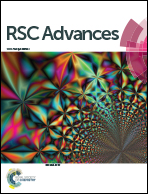Magnetic chondroitin targeted nanoparticles for dual targeting of montelukast in prevention of in-stent restenosis
Abstract
Zinc substituted magnetic nanoparticles (MNPs) were prepared by a hydrothermal reduction method and were encapsulated along with sodium montelukast within rosin gum nanoparticles (NPs) prepared by a solvent evaporation method. The resulting NPs were targeted to endothelium cells by applying an outer layer of chondroitin sulfate on the surface of the NPs. The characteristics of magnetic and rosin NPs were determined by Fourier transform infrared (FT-IR) spectroscopy, thermogravimetric analysis (TGA), transmission electron microscopy (TEM), and vibrating sample magnetometry (VSM). The heat capacity and crystalline state of citric acid (CA)-coated MNPs were analyzed by X-ray diffraction (XRD). The iron content in rosin NPs was determined by a flame atomic absorption method. Bovine serum albumin (BSA) was used to test the protein binding of rosin NPs. The endothelial cell adhesion properties of rosin NPs and their anti-inflammatory effect were studied on HUVEC cells by fluorescent microscopy and VCAM-1 Elisa analysis, respectively. TGA results confirmed the presence of CA and rosin on the surface of the MNPs. The rosin NPs showed just 31% protein binding and the VSM analysis showed the superparamagnetic properties of the coated NPs at room temperature. Targeted rosin NPs showed more adhesion to endothelial cells than non-targeted ones and montelukast loaded NPs were more efficient than the free drug in suppression of VCAM-1 expression.


 Please wait while we load your content...
Please wait while we load your content...